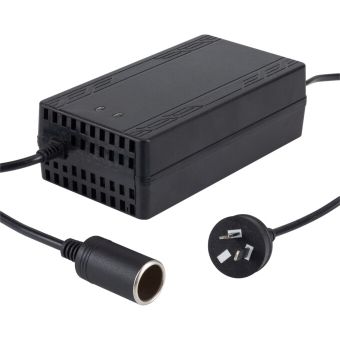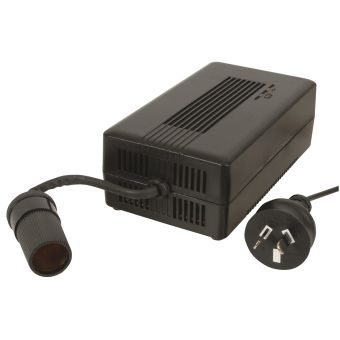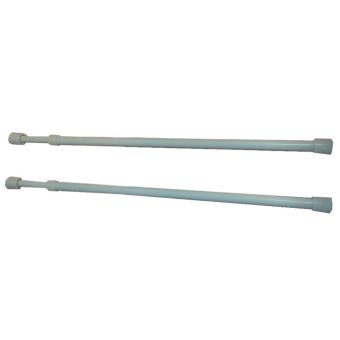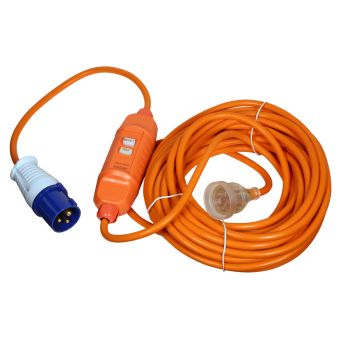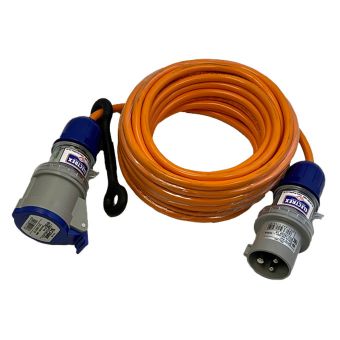Campervan Fridges - Which one do I choose?
Upgrading from the classic chilly bin and ice combo to a 12V campervan fridge feels like a big step up in the world. Without the need to run to a store for ice every few days, you can spend much more time relaxing and enjoying your holiday. If you live and travel full time on the road, a high quality fridge is an absolute must!
Have a fridge you want to install in your camper? Check out the installation guide of a 49L Iceco Fridge HERE
Overview
Searching for a new fridge for your camper can be a headache. They come in so many different sizes and have a range of power methods and consumption. Like with anything designed specifically for caravans and motorhomes, the prices of some units can seem like a lot - how can a tiny fridge cost more than the one in my house?! Not all fridges are created equal, and the development that has gone into it’s cooling efficiency and power consumption greatly affect the price.
This article will clarify what fridges are available, and which is best for your needs and budget!
Can I use any small fridge?
The short answer is yes, the correct answer is no! Many people see the cheap bar fridges and think these will be a great affordable option for their camper. The reality is that these only run on mains or 240V power, and they are so inefficient that you would spend more money on solar panels and batteries just to power it! If your vehicle is parked up full time or only moves from powered site to powered site then sure, a bar fridge could work for you, but this won’t suit most mobile travellers.
Fridges built specifically for the camping market are designed differently than those used in houses. They need to be more efficient as power is usually limited. Not only do their electrical components draw less power when cooling, but their construction and insulation means their internal temperature stays as low as possible. A life on the road can be hard, so camper fridges are specifically designed to handle all the bumps and vibrations that come from the vehicle's movement.
Physical fridge types
Starting with the most obvious, there are a few different physical styles of fridges, each with their own benefits in certain situations. There are portable or chest style fridges, built in or upright fridges, and even fridge drawers. Let’s see what each style is best for!
Portable / Chest Fridges
These types of fridges are quite common in small campervans and four wheel drives. They are shaped like a chilly bin and have a top opening lid to provide access. With sizes beginning around 15L and going all the way up to a gigantic 95L, there’s one to fit any vehicle. Typically these fridges are hidden away under the bed or in the boot of a truck, so they need to be mounted on a drawer runner to allow easy access. An upside to a chest style fridge is you can pack a whole lot in and the cool air won't escape when you open the lid - it can get a bit frustrating having to pull everything out to reach something at the bottom though!
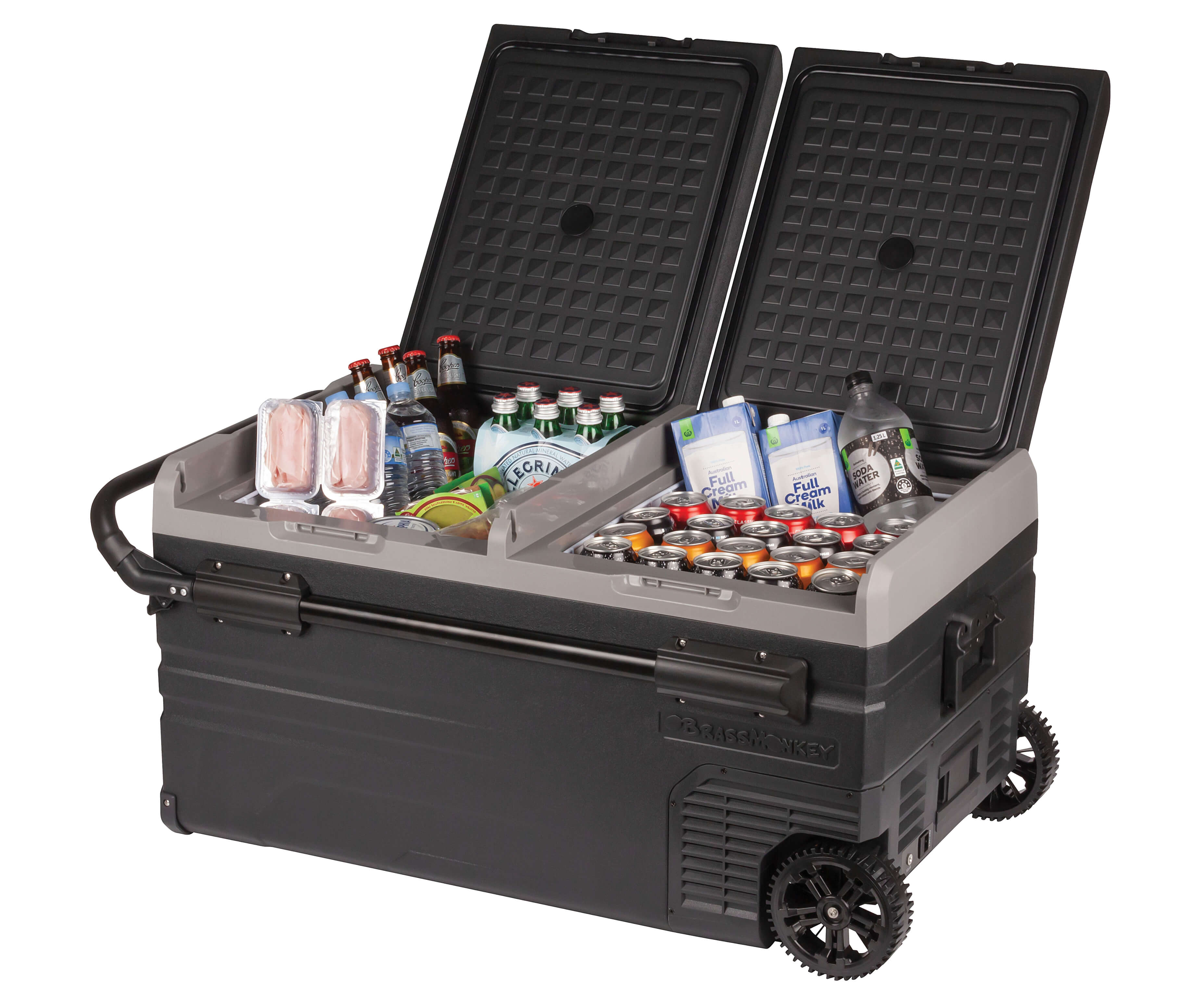

Built in / Upright Fridges
Usually considered an upgrade from the portable fridges, a larger upright fridge makes a camper feel more like home. With front opening doors and capacities ranging from 40 to 140L, these fridges can be treated just like the fridge in your house. Upright fridges are usually mounted into the kitchen cabinets and underneath the benchtop - don’t forget to allow for the depth of your fridge when building your cabinetry. Upright fridges are very convenient but leaving the door open will result in all the cold air ‘falling’ out!
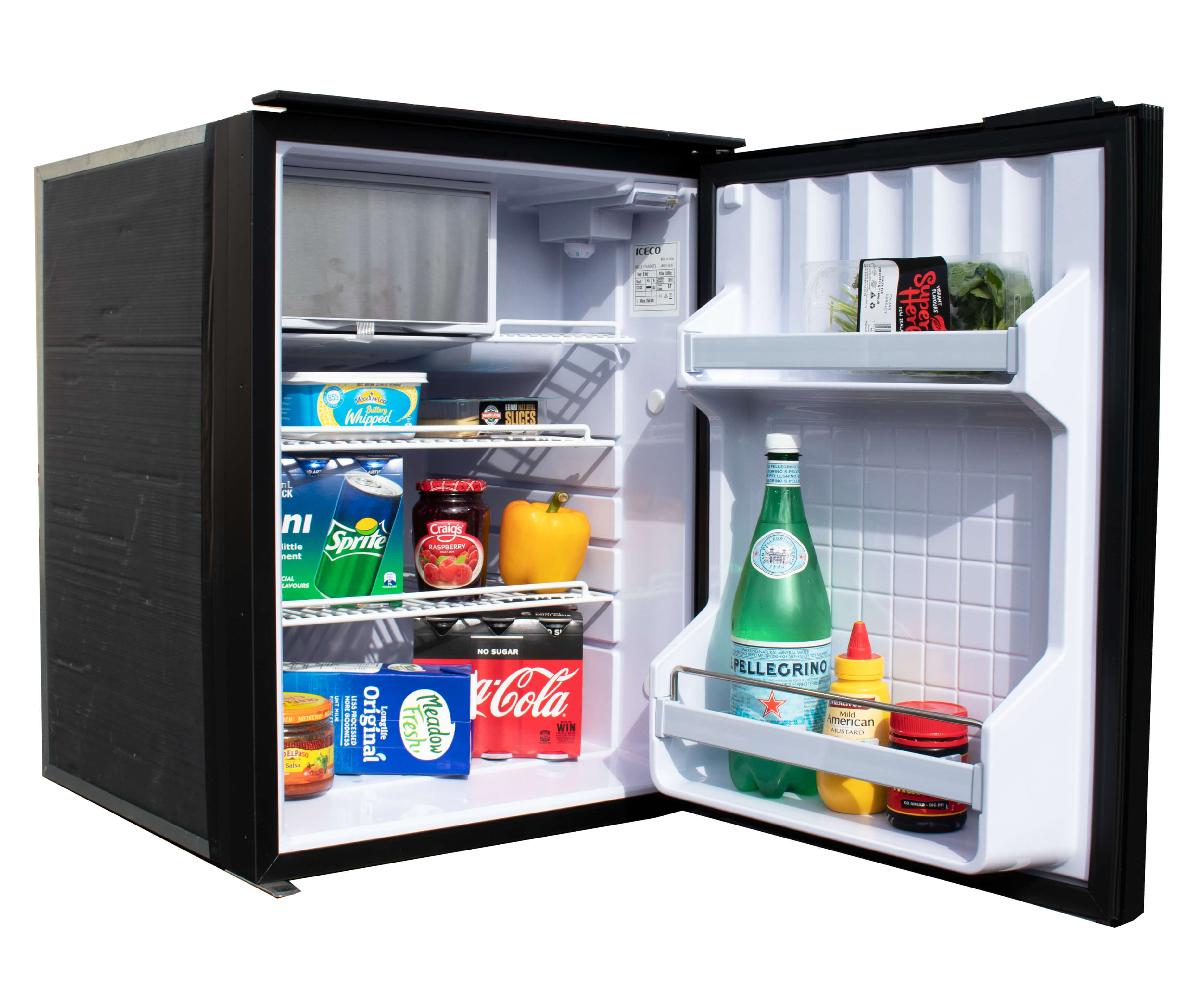

Drawer Fridges
These are relatively new to the market and have been specifically designed to save space. With a capacity of around 30-40L, these drawer fridges are ideal for micro campers who still want it all. The low height and small dimensions overall really enable a drawer fridge to be installed anywhere - under a low couch is where these are utilised most. While these units are small, they are deceptively spacious inside. A 30L version can hold enough fresh food for at least 3-4 days, with the only restriction being the height of containers and bottles.
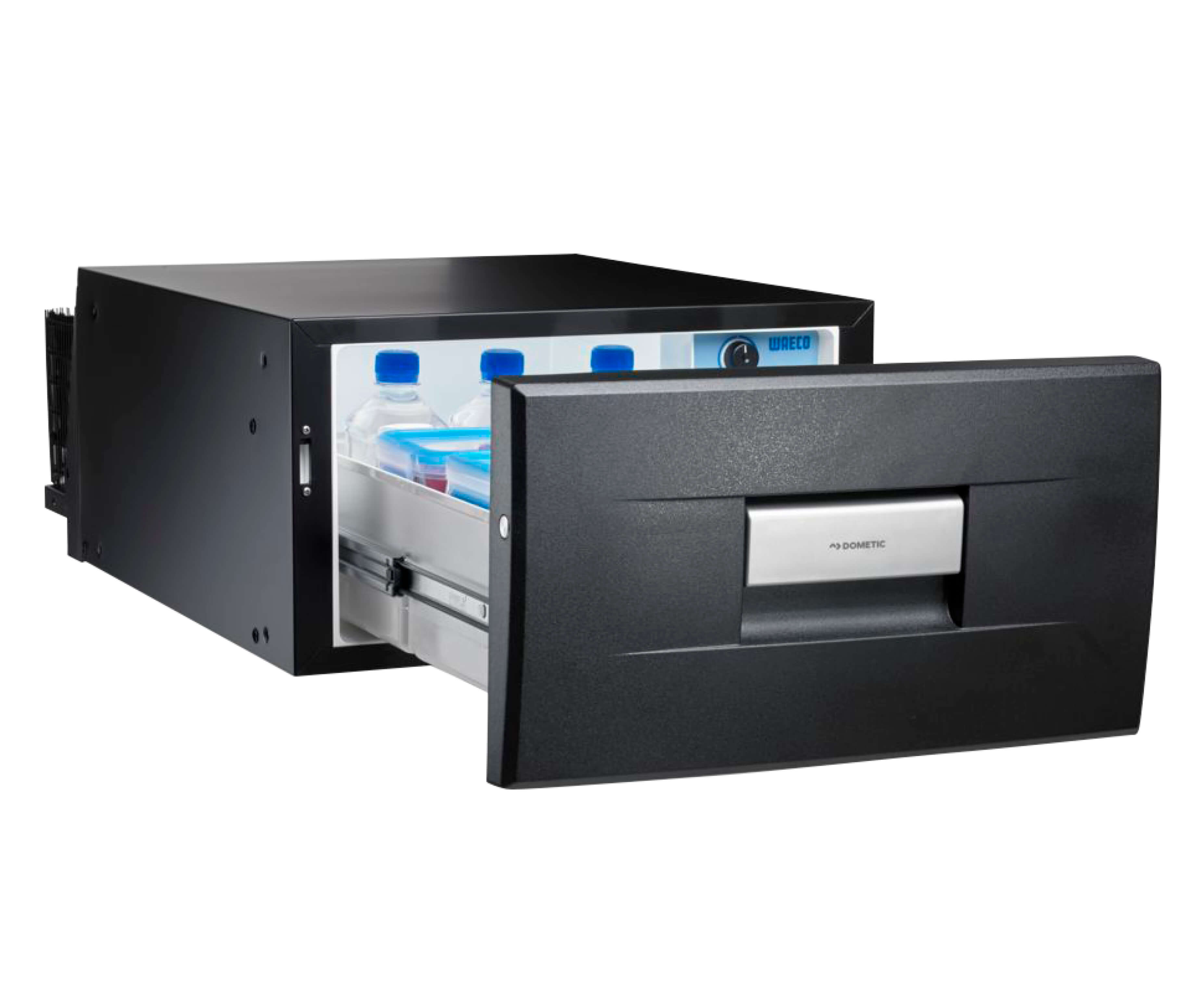

Best Cooling Technology
There are 3 main cooling technologies used in campervan fridges these days:
- Thermoelectric
- Absorption
- Compressor
Thermoelectric fridges are technically more of a cooler than a refrigerator. They are designed to maintain the temperature of food and drink that’s already cold, making them great for road trips. These little coolers are cost effective, lightweight and portable, but due to their poor insulation and constant power draw, they aren’t suited for off-grid camping. The air temperature greatly affects these coolers so they don’t work well in warm climates.
Absorption fridges are a step up from the thermoelectric version. Often referred to as 3 way fridges due to their multiple power options (12V, 240V & LPG), these are a good budget option for campervans and motorhomes. The fridge is cooled by a gas flowing through the back of the unit, this absorbs the heat and therefore cools the fridge. The upsides of an absorption fridge is their versatility, low price point and silent operation. Unfortunately there’s also a few downsides such as their high power consumption and the need to be level to operate correctly - the coolant/gas is operated by a small flame at the back of the unit. If the fridge is on a slant then this flame won’t make contact where it should and can potentially ruin the fridge!
Compressor fridges have become the best option for campervans in recent years. Refrigerant is circulated through lines in the back of the fridge that evaporates and condenses causing a continuous cooling effect. Compressor fridges beat the competition in nearly every way! They are able to get down to temperature quickly and efficiently, often using ⅓ of the power (12V) of the other fridge types. They usually have better insulation meaning they don’t need to cycle as often, and they can resist the outside temperature much better. Nothing comes without a downside however, and compressor fridges are no different. Their high price usually puts people off from the get go, but if you’ve had a cheap and inefficient fridge, you’ll know that a good one is well worth the cost. Some people also find the noise of a compressor fridge too much. The motor does make a bit of noise when it’s operating and this can stop some from sleeping at night. New models do a good job of reducing noise compared to their rattley ancestors. Any fridge with a Danfoss or SECOP compressor will work well.
Campervan Lead Options
The final thing to know about campervan fridges is how they are powered. Each of the above varieties can usually be powered in a few different ways, so let's have a look at what they are and which works best.
Like with the small bar fridges mentioned at the beginning of the article, some campervan fridges come with a 240V AC (mains) power input. This will look just like a regular plug you use at home. Fridges with this input are great for holiday parks or static long term stays in a driveway where access to mains power is available. A little camper hack is to use the 240V hookup to ‘pre-cool’ the fridge the night before heading out on a trip, this way it doesn’t use all the battery power to get cold!
The most common method to power a campervan fridge is 12V DC power. With nearly every electrical component in a campervan running on 12V these days, it makes sense to have a fridge run off this as well. Old and cheap 12V fridges can be quite inefficient and cause excessive drain on your batteries, but as the years have gone by the efficiency has greatly improved, meaning a 12V fridge is all you need! If the budget allows, a high quality 12V compressor fridge will last you a lifetime.
The final method to power a campervan fridge is with gas or LPG. This is the oldest of the refrigeration technologies, dating back to 1824! This method is great for those with a small electrical setup or no secondary battery at all. A regular bbq bottle can be used to power the flame at the back of the fridge, causing gases to be created and condensed, creating the cooling effect. This method is slowly disappearing as the efficiency of the electric units improves.
Tips For Fridge Shopping
Before we wrap up this article, here’s some things to think about when you head out to purchase your new fridge:
- What size fridge do I really need?
- The bigger the fridge, the more power needed to cool it. A small full fridge will stay cooler than a large empty one.
- How is it powered? Can my existing setup run it?
- Check if your current battery bank is enough to handle the fridge upgrade. If you want to run it off 240V or LPG, a certified electrician or plumber must complete and certify the installation.
- Is it well insulated?
- Thicker walls generally mean better insulation. Some portable units come with an optional bag for extra insulation
- What is the build quality like?
- If you’re spending some decent money, you want it to last a while. Quality parts and mechanisms make a difference. Vibrations of vehicles can kill cheap fridges.
- How does the door latch/lock?
- Older front opening fridges used a pin to lock the door for travel. Trust me, this can be easily forgotten and results in your food flying around the back of the camper at the first turn. A door handle and latch combo can save a huge mess!
Summary
Well after reading this article, hopefully the muddy waters of campervan fridges have cleared! Improvements in the technology and manufacturing of these fridges means there’s no shortage of options out there, and you should now know what option will work best for you. As always, our in store experts are standing by to give you the best personalised help. Come on in and have a chat today!
Don’t forget to head over to our Burnsco How To - Campervan 12V Fridge Installation guide to see how easy it is to set one up!
Do you have any questions?
Please, contact our friendly team on 0800 102041 or email: website@burnsco.co.nz
We provide general information on products, not personal advice. Always seek the help of a relevant tradesperson if you have a technical query.
